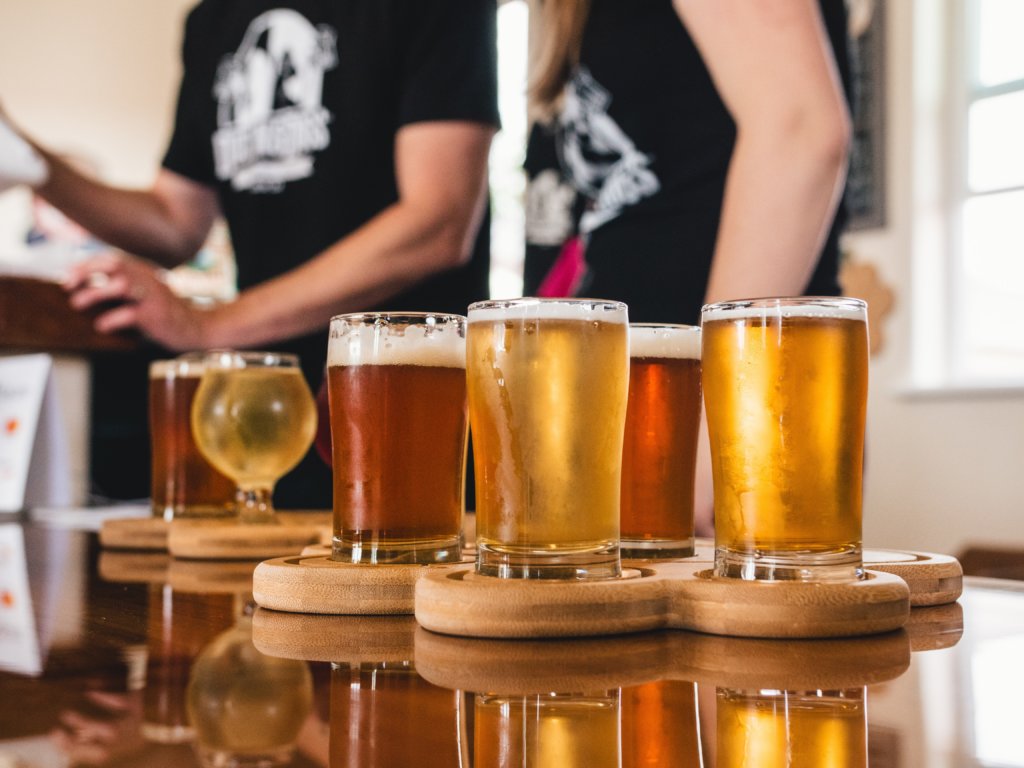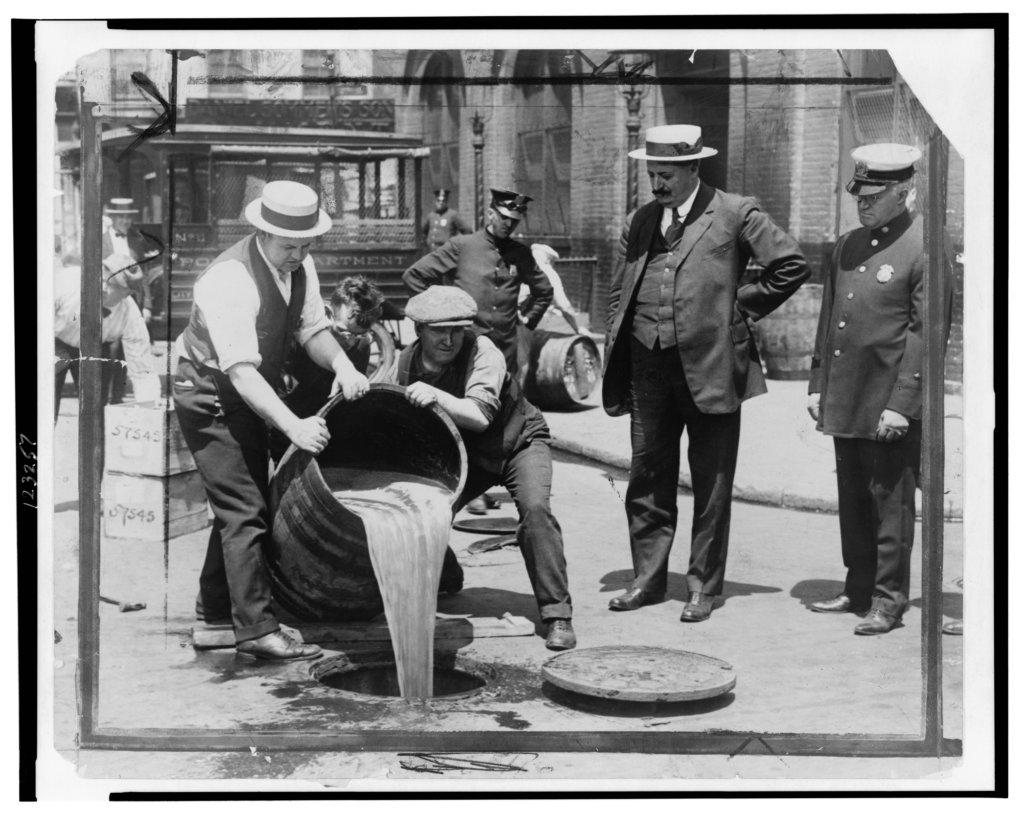Anyone who has attended a Buffalo Bills game knows it’s no secret that the people of Western New York like to drink.
While Labatt and Molson are popular mass-produced beer choices due to Buffalo’s proximity to Canada, there’s been a large growth in the number of people drinking craft beer brewed locally over the past decade or so.
You’ve probably heard of popular local breweries that have popped up in recent years, such as Resurgence, Big Ditch and Community Beer Works. In fact, there are now more than 40 breweries in the Buffalo region, along with several distilleries, according to Visit Buffalo Niagara.

Since cold weather is about to hit and we’ll all be spending more time inside watching the Bills and Sabres, we thought it would be interesting to take a trip back in time to better understand the history of beer brewing in Buffalo.
The Beginnings of Buffalo Breweries
Buffalo’s beer brewing history can be traced back over 200 years. According to Buffalo Spree, in 1805 William Hodge opened Cold Spring Tavern, Buffalo’s first business specifically for drinking, at Main and Ferry.
Later, in 1811, Joseph Webb opened Buffalo’s first brewery-tavern in Black Rock, making use of some of the first wheat grown in Erie County, according to Buffalo Spree. However, the brewery burned down during the war of 1812.
It wasn’t until the opening of the Erie Canal in 1825 that beer brewing really exploded, like many other industries in Buffalo. The opening of the canal led to Buffalo’s population ballooning from 2,000 to 42,000 over a 30-year period, according to Buffalo Spree, spurring new demand and opportunity for growth.
The opening of the canal helped transform the city into a major center of shipping and industry. According to Buffalocal, by 1831, over 173,000 bushels of wheat was delivered by port to Buffalo, and nearly all of it was for use in brewing.
Notable breweries included Jacob Roos Brewing, which opened in 1830 between Church and York Streets (renamed the Iroquois Brewing Company and relocated in 1893); the German American Brewing Company, which opened at the corner of Main and High in 1849 and helped cement the influence of German immigrants in the area; and John Schusler Brewery, which opened in 1856, was renamed William Simon brewery in 1896 and served as Buffalo’s longest running brewery until its closure in 1972.
By 1875, Buffalo was home to 38 breweries, 2500 saloons, and 150 hotels where beer was sold, according to WGRZ. This put Buffalo’s beer scene among the best in the entire country, according to records at the time.

By 1908, Buffalo brewers produced over 31 million gallons of beer and most, if not all, was consumed locally, according to Buffalocal.
The Challenges of Prohibition
Unfortunately, Buffalo’s breweries were dealt a severe blow by the introduction of Prohibition in the U.S. in January of 1920. This made it illegal to produce, import, transport and sell alcoholic beverages.
The federal law forced Buffalo’s 29 breweries to close or shift to producing nonalcoholic beverages. However, bootleggers continued to produce beer illegally, and Buffalo managed to maintain 8,000 places to purchase alcohol in the 1920s.

Prohibition ended in 1933, but the local brewing industry had a hard time recovering. High state taxes and the difficulties of Prohibition had put many local breweries out of business, and they could not compete with national brewers who could advertise across the country and mass produce beer at lower prices. Labor disputes also helped contribute to the closure of breweries in New York state, and by 1949 Wisconsin surpassed the state in beer production.
In the early 1970s, Buffalo’s oldest and largest local breweries, Iroquois Brewing (which had moved to Buffalo’s East Side along Pratt Street), and William Simon (located downtown at the corner of Clinton and Emslie St), both closed. The two breweries had led Buffalo’s beer production for many years, but they could not compete with the rise of national breweries. With their closure, Buffalo’s brewing scene effectively shuttered.
The trend of microbreweries closing and national brands thriving was seen across the country and continued in the following decades. In 1974, there were only 69 breweries still operating all across the U.S. — down from 750 in 1935.
The Re-emergence of Buffalo’s Brewing Scene
A glimmer of hope for Buffalo’s brewing scene came in 1986 when the Buffalo Brewpub opened at 6861 Main Street near Transit in Williamsville, becoming the only operating microbrewery in the WNY area. Over the next decade, a handful of breweries opened, but they all ended up being sold to brewers in other areas or closing.
After the Buffalo Brewpub, Ellicottville Brewing Co. opened in 1995, followed by Pearl Street Grill & Brewery in 1997 and Flying Bison Brewing Company in 2000. All of these local breweries remain open today and helped pave the way for other brewers that have opened in the past 10 years. The Buffalo Brewpub is currently the oldest brewery operating in New York state.
Some notable brewery openings over the past decade include:
- Community Beer Works (2012)
- Hamburg Brewing (2013)
- Resurgence Brewing (2014)
- 12 Gates Brewing, 42 North Brewing, Big Ditch Brewing, New York Beer Project (2015)
- Pressure Drop Brewing (2017)
- Froth Brewing (2018)
Local beer festivals have also flourished in Buffalo in recent years. Buffalo Brewfest, Buffalo On Tap and the New York State Craft Brewers Festival are just some of the events that locals have come to look forward to every year to sample local brews.
200 Years of Buffalo Breweries
Since its first breweries opened in the 1800s, Buffalo has been a drinking town. When the weather is cold, there’s no better way to spend an evening than sampling beer brewed right here in Buffalo. Despite the challenges Buffalo’s breweries faced in the 1900s, it’s clear that the city has re-established itself as a center of craft beer brewing.
To get a better sense of Buffalo’s brewing history, check out this interactive map from the Buffalo History Museum, which pinpoints the locations of Buffalo’s breweries, malt houses, distilleries, wineries, cider houses and meaderies from 1828 to the present.Which breweries will you be visiting this fall? Let us know in the comments below.

 Fair Housing Notice
Fair Housing Notice 